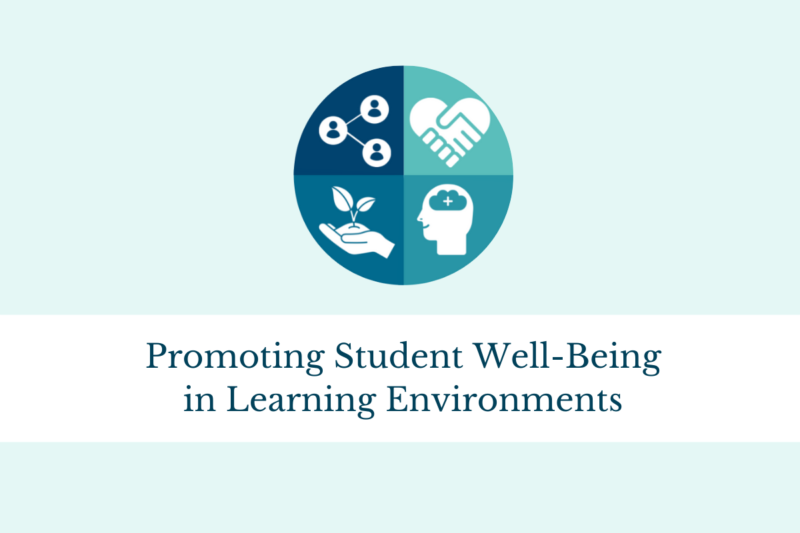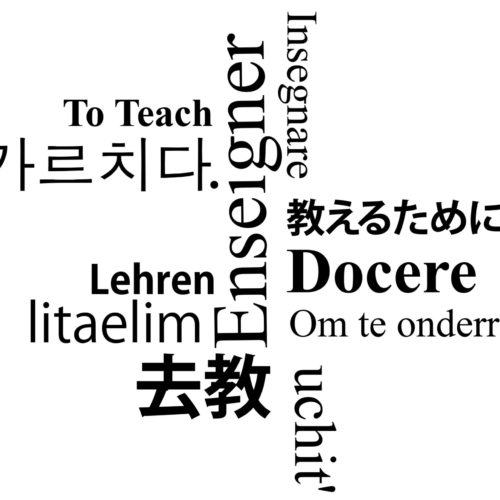
Faculty Spotlights: Belonging & Growth Mindset
WashU faculty share strategies for supporting student belonging and growth mindset.
 In the CTL’s new guidebook for instructors, Promoting Student Well-Being in Learning Environments, one of the keys to well-being that we highlight is Belonging & Growth Mindset. We encourage faculty to show students that mistakes are part of the learning process and help them work through challenges in a way that encourages self-compassion and promotes a sense of belonging.
In the CTL’s new guidebook for instructors, Promoting Student Well-Being in Learning Environments, one of the keys to well-being that we highlight is Belonging & Growth Mindset. We encourage faculty to show students that mistakes are part of the learning process and help them work through challenges in a way that encourages self-compassion and promotes a sense of belonging.
We spoke with four WashU instructors about some of the challenges that students face and how they help to support belonging and growth mindset in their classes.
Mijeong Mimi Kim
Teaching Professor of Korean Language & Korean Language Coordinator
What kinds of challenges related to belonging and growth mindset do you notice with your students?
“Many of our students come to us with very specific goals in mind. They are high achieving students with high goals. Grades are very important to them. And it’s a fine balance of giving them opportunities to earn grades, but that shouldn’t be the sole purpose of class.”
When students struggle, what kinds of things do you hear them say? And how do you talk with them about this?
“Many of them are really hard working and they come to me and say they’re still having a hard time. I just listen to them—how they are approaching studying, how they practice—and I give them advice and direct them to different tools and extra resources. Language learning is really messy and time-consuming. And I tell them ‘It’s okay not to be perfect on the first try or all the time. Look at me. I’ve been learning English and speaking English for about 40 years and I still make mistakes.’”
How is your course set up to provide opportunities for students to adopt a growth mindset?
“I provide multiple types of process-oriented assessments (formative, summative, informal, formal, group, individual) in small steps. For students, they like knowing that there are many different opportunities to do well. And my intention is, especially at the beginner level, to address students with different strengths and varied backgrounds. There’s a once-a-week interactive lab where students can progress at different speeds and they have opportunity to interact and get feedback. While it provides a structure, students also have choices. That has been a very effective way to encourage improvement in students with varying interests and backgrounds.”
Janie Brennan
Senior Lecturer in Energy, Environmental & Chemical Engineering
When students struggle, what kinds of things do you hear them say? And how do you talk with them about this?
“I don’t see a lot of students coming in and just wanting the answer. I know that’s what people sometimes expect students to do, but I don’t see that at all. Students here are very good about really wanting to understand what’s going on. A lot of times they won’t know how to articulate what they’re struggling with, they just say ‘I’m stuck on this problem. I don’t know how to go forward.’ So I work on teasing it out of them. I ask ‘How far have you gotten? What do you understand about the problem?’ And then as they’re talking, we find the point where they are having trouble.”
How is your course set up to provide opportunities for students to adopt a growth mindset?
“The biggest one is definitely my reflective homework strategy. All of their homework is graded on completion—they get 100% if they finished a problem regardless of their answer and 50% if they at least made some effort to solve it, but didn’t finish. So that takes away a lot of the stress and helps them focus on trying things out. Students are assigned a few new problems every week. And then the next week, they’ll be asked to look at the solution to those previous problems and make corrections to problems that they missed. And if they got it correct, I still ask them to look at my solution and compare it to their strategy to see what they can learn from that. It helps them focus on improvement.
Also, for my exams and quizzes, I allow students to make corrections for some of the points back. So there’s definitely an incentive to study and do well the first time, but then they are also motivated try to see if they can figure out the problems they got wrong later and why they got it wrong.”
Peter Monahan
Director of the College Writing Program & Teaching Professor in College Writing
What kinds of challenges related to belonging and growth mindset do you notice with your students?
“Students sometimes come in thinking either, ‘I’m a good writer, I’ve gotten good grades in the past,’ or, ‘I’m a bad writer, I can’t do it, I don’t want to do it.’ I think the anxiety that surrounds writing is palpable in the room. If they think they are good writer, they’re sometimes anxious about constantly living up to that, or if they think they’re a bad writer, they’re ready to fail before they even start. That really is important to get past. Another challenge is imposter syndrome, especially in the first year. Not feeling that they belong here. I think they don’t necessarily realize that they’re all thinking the same thing.”
When students struggle, what kinds of things do you hear them say? And how do you talk with them about this?
“I think it can be really powerful to hear someone in authority who’s been doing this forever say to them, ‘Sometimes I really struggle,’ and sending the message that it’s okay to have a bad draft. And this idea is just something that I continue to repeat to students, that we are learning here and writing is a tool for learning. Ideas don’t spring fully formed from our heads. I hope that hearing me talk about this helps the students to relax and see class as a generative space where writing can be really helpful for them.”
How is your course set up to provide opportunities for students to adopt a growth mindset?
“I try to be very careful to scaffold all of my assignments. That’s where process portfolios come into play. I break down what I’m asking them to do into steps that allow them to practice the skills in a low stakes way rather than just trying to do it all for the first time in the bigger assignment. For example, for their analysis essay, I’ll plan short exercises and small group workshops where they get peer feedback.”
Click Here to see an example of scaffolding in the process portfolios.
Elise Walck-Shannon
Lecturer in Biology
When students struggle, what kinds of things do you hear them say? And how do you talk with them about this?
“Some things that we hear them say are that they just got really behind because of their other coursework or other demands and didn’t know how to manage their time. Or that they thought they knew the material and then got to the exam and realized that they didn’t.”
How is your course set up to provide opportunities for students to adopt a growth mindset?
“We’ve gone through a lot of transformation in the past few years to add more structure and transparency. So now, for example, students are able to look at the list of learning objectives and terminology before class and also use that as a study guide later.
They have low-stakes weekly quizzes as well as optional, ungraded practice quizzes to help them prepare. So that helps in a variety of ways. It helps them know what to expect. It also helps them manage their time because we have deliverables each week, so they schedule their study time better.
Another thing that we’ve started in the last few years is to provide suggested study habits. Not just general strategies, but actual examples of how to use those strategies in the course. And we also post quotes from previous students so they can hear that perspective. The previous students actually really enjoy being able to share their advice with future students. It’s a nice way to affirm the research that’s been done, being able to have their peers say, ‘It really works in this course.’”
Click Here to see an example of the study habits materials that are given to students.




